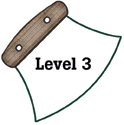|
National Science Education Standards
Many different people in different cultures have made and continue to
make contributions to science and technology. (Page 166)
Science and technology have advanced through contributions of many different
people, in different cultures, at different times in history. Science
and technology have contributed enormously to economic growth and productivity
among societies and groups within societies. (Page 169)
Scientists and engineers work in many different settings, including
colleges and universities, businesses and industries, specific research
institutes, and government agencies. (Page 169)
Women and men of various social and ethnic backgrounds-and with diverse
interests, talents, qualities, and motivations—engage in the activities
of science, engineering, and related fields such as the health professions.
Some scientists work in teams, and some work alone, but all communicate
extensively with others. (Page 170)
Scientists formulate and test their explanations of nature using observation,
experiments, and theoretical and mathematical models. Although all scientific
ideas are tentative and subject to change and improvement in principle,
for most major ideas in science, there is much experimental and observational
confirmation. Those ideas are not likely to change greatly in the future.
Scientists do and have changed their ideas about nature when they encounter
new experimental evidence that does not match their existing explanations.
(Page 171)
Tracing the history of science can show how difficult it was for scientific
innovators to break through the accepted ideas of their time to reach
the conclusions that we currently take for granted. (Page 171)
|
|
Benchmarks
Important contributions to the advancement of science, mathematics, and
technology have been made by different kinds of people, in different cultures,
at different times. (Page 17)
|

